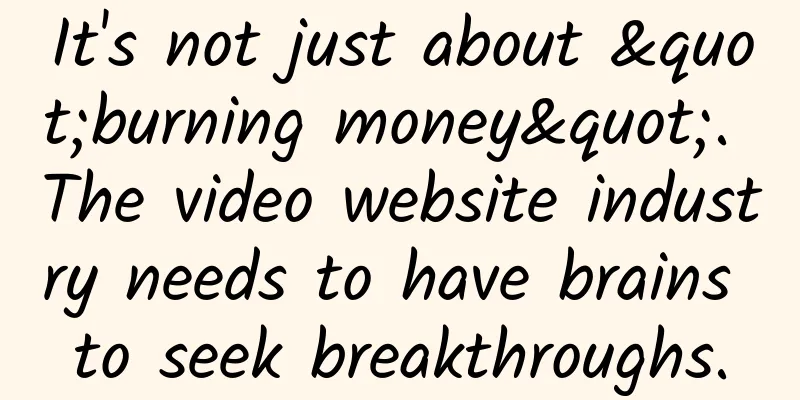Why is it so easy to lose your flag? Here are some tips to help you rush towards your goal with full energy

|
As we bid farewell to the old and usher in the new, it is that time of year again to make New Year’s resolutions. How many of the goals you set last year have you accomplished? A community survey found that just one month after setting a goal, nearly half of the people gave up. Data source: Norcross et al. (1989) Part 1 Why is the flag easy to fall? If you want to keep the flag firmly in place, you must first know why the flag is prone to fall. Psychology believes that the reason why goals are difficult to achieve is because there is a gap between intention and action. In simple terms, there is a gap between "wanting to do" and "doing it". Whether ideas can be transformed into actions depends on your self-control and motivation level. Self-control is a limited cognitive resource: it not only motivates us to execute our goal plans, such as losing weight, but also requires us to suppress a series of distractions that are irrelevant to the goal: the barbecue smells so good, I want to eat a hundred million more bites. A meta-analysis study involving 3,899 people found that 36% of people set goals but were unable to cross the gap due to lack of self-control, which ultimately led to the flags falling to the ground. In addition to self-control, your motivation for setting a goal plan is also very important. When setting goals, have you ever asked yourself, are these goals what you really want in your heart, or are they just for others to see? Psychology calls this kind of goal set in accordance with inner thoughts a self-concordant goal, which means that the desire to achieve a certain goal is based on one's own interests and values, rather than under external pressure or the expectations of others. This kind of self-consistent goal is easier to stick to. The researchers recruited 189 freshmen and asked them to set goals they wanted to achieve in their future college life. Based on the reasons behind them, these goals were divided into: Self-consistent goals: “I think these goals are important to me”; “Achieving these goals will bring me pleasure”; External pressure goals: "Because my parents, friends and others expect me to do these things"; "If I don't achieve these goals, I will feel guilty or anxious." The results showed that students who set self-harmony goals were more likely to persist, and most of them could persist for more than 3-5 months. However, students who set external pressure goals gave up quickly. Psychologists Deci and Ryan proposed the self-determination theory to explain people's motivation to do things. They believe that self-determination is a nature and instinct. People tend to believe that their behavior is self-determined, rather than for external rewards or to please others. When an individual's behavior is self-determined, it can stimulate inner motivation and bring more fun, which will lead to a greater ability to stick to the established goals. Therefore, when you set a resolution at the turn of the year, take a moment to ask yourself: Do I want to achieve this goal out of my own interest, or do I want to meet the expectations of others? It should be emphasized that the trend of motivation level gradually decreasing during the process of goal achievement is a normal psychological law. Because motivation is also a resource that will be gradually depleted over time, some strategies or sufficient incentives are needed to maintain a high level of motivation for a long time. So, what are the psychological methods that can help us keep our goals? Part 2 Tips to stay energetic and rush towards the flag Step 1: Break down big goals into small goals I believe many people know that we can divide big goals into small goals that are easier to achieve, and then set a plan for each small goal. In this way, every time we achieve a small goal, we can feel the sense of accomplishment it brings. This sense of accomplishment can motivate us to move towards the next small goal, thus bringing us back to a state of full energy. This is the method mentioned above to "maintain a high level of motivation by getting enough incentives." Step 2: Record your progress towards your goals Psychologist Bonezzi's research found that if you can record your progress towards your goals, you can restore your high motivation level by adjusting your reference standard for your goal progress. The reference standard refers to whether you use the completed progress or the progress to be completed as the reference standard when recording and reminding yourself of your goal progress, as shown in the following figure: Image source: Made by the author Step 3: Use different reference strategies at different times The study also found that people will show different motivation level trends when using two different reference strategies. If people always use the completed progress as a reference, their motivation will gradually decrease. Conversely, if they always use the progress to be completed as a reference, their motivation will gradually increase: Image source: Reference 2 In the process of executing the plan, you should learn to use different reference strategies to help yourself achieve your goals. For example, before reaching 50% of the goal, always remind yourself how much progress you have made, instead of thinking about how far you are from the goal; and after reaching 50% of the goal, you should always tell yourself that only a few percent are left to complete the goal. Using this method, you can keep yourself at a high level of motivation for a long time, making it easier to stick to the end. Part 3 How you do something is more important than what you do. If I ask you, what goals do you want to achieve in 2022? Some people may say: work out to get a six-pack and abdominal muscles; read at least twenty books; pass the judicial examination... Did you find any common features among these goals? These can be said to be goals or wishes, but none of them say what needs to be done to achieve these goals, that is, your implementation intention. By setting execution intentions and making action plans as detailed as possible, people can improve their ability to control themselves and be motivated to complete even difficult goals as much as possible. Image source: Unsplash In order to prove the importance of implementation intention in achieving goals, psychologist Koestner and others recruited 106 volunteers and randomly divided them into an implementation intention group and a control group. The control group only needed to set goals, while the implementation intention group needed to set goals while also developing ways to achieve the goals. For example, a female volunteer set a goal to finish reading the first half of Paradise Lost, and in order to achieve this goal, she set a rule for herself to read every Saturday from 2 to 4 pm, and to turn off her mobile phone at that time to prevent external interference. The results showed that after two weeks, volunteers in the implementation intention group had completed 68% of their target progress, while the control group had only completed 55%. When setting goals this year, instead of saying “In 2022, I want to pass the judicial examination”, it is better to say it another way: “In 2022, I will pass the judicial examination. To achieve this goal, I will set aside at least one day every weekend to go to the library to review.” So, what goals have you set for 2022? References: Koestner R, Lekes N, Powers TA, Chicoine E. Attaining personal goals: self-concordance plus implementation intentions equals success. J Pers Soc Psychol. 2002 Jul;83(1):231-44. PMID: 12088128. Bonezzi, A., Brendl, CM, & De Angelis, M. (2011). Stuck in the Middle: The Psychophysics of Goal Pursuit. Psychological Science, 22(5), 607–612. Deci, EL, & Ryan, RM (2000). The "what" and "why" of goal pursuits: Human needs and the self-determination of behavior. Psychological Inquiry, 11(4), 227–268. Gollwitzer, PM, & Sheeran, P. (2008). Implementation intentions and goal achievement: A meta-analysis of effects and processes. In J. Ogden (Ed.), Essential readings in health psychology Open University Press/McGraw Hill. Produced by: Science Popularization China Produced by: Chen Yufeng Producer: Computer Network Information Center, Chinese Academy of Sciences (The images with source indicated in this article have been authorized) The article only represents the author's views and does not represent the position of China Science Expo This article was first published in China Science Expo (kepubolan) Please indicate the source of the public account when reprinting China Science Expo |
<<: Lying flat on the passenger seat? This could have serious consequences!
>>: After using gas, should you turn off the gas first or the fire first?
Recommend
New media operation user growth skills!
Growth is from less to more. The root of all grow...
WeChat plans to launch a paid cloud storage service for chat records, with a minimum price of 130 yuan per year?
Just when everyone had gotten used to using WeCha...
Why is this monkey's butt blue and mine isn't?
One of my daily tasks is to restore ancient anima...
Should you upgrade your iPhone to iOS 10?
[51CTO.com Quick Translation] iOS 10 looks good, ...
Peachtree's Practical Skills for Opening a Store Without a Source, Earn 5,000+ Per Month as a Part-time Job
Course content: 1. Xianyu practical skills: how t...
Tesla lays off half of global recruiting team to cut costs
March 13 news, according to Electrek, in recent w...
Why do you always fail in promotion?
After three months of closed development, the App...
Many reasons to tell you that the iPhone 4s is still good enough
Speaking of the pinnacle of smartphone history, A...
In-depth interview with Yuanqi Forest and Heytea: How to create hot products through new marketing?
The timeline of 2020 is coming to an end, and the...
How to optimize memory in Android development
Editor's note: Some of the content in this ar...
How to pay social security during the epidemic? How do units and individuals pay respectively?
The social security exemption policy was introduc...
@Spacecraft: Watch out! Earth lightning and space "killer electron rain"
Author: Huang Xianghong Duan Yuechu In recent yea...
New bond training video tutorial
New bond training video tutorial A complete set o...
Science and Technology News丨The first endangered species of purple moorhen appeared in Longling, Yunnan
【Today’s cover】 On November 21, after a winter sn...









